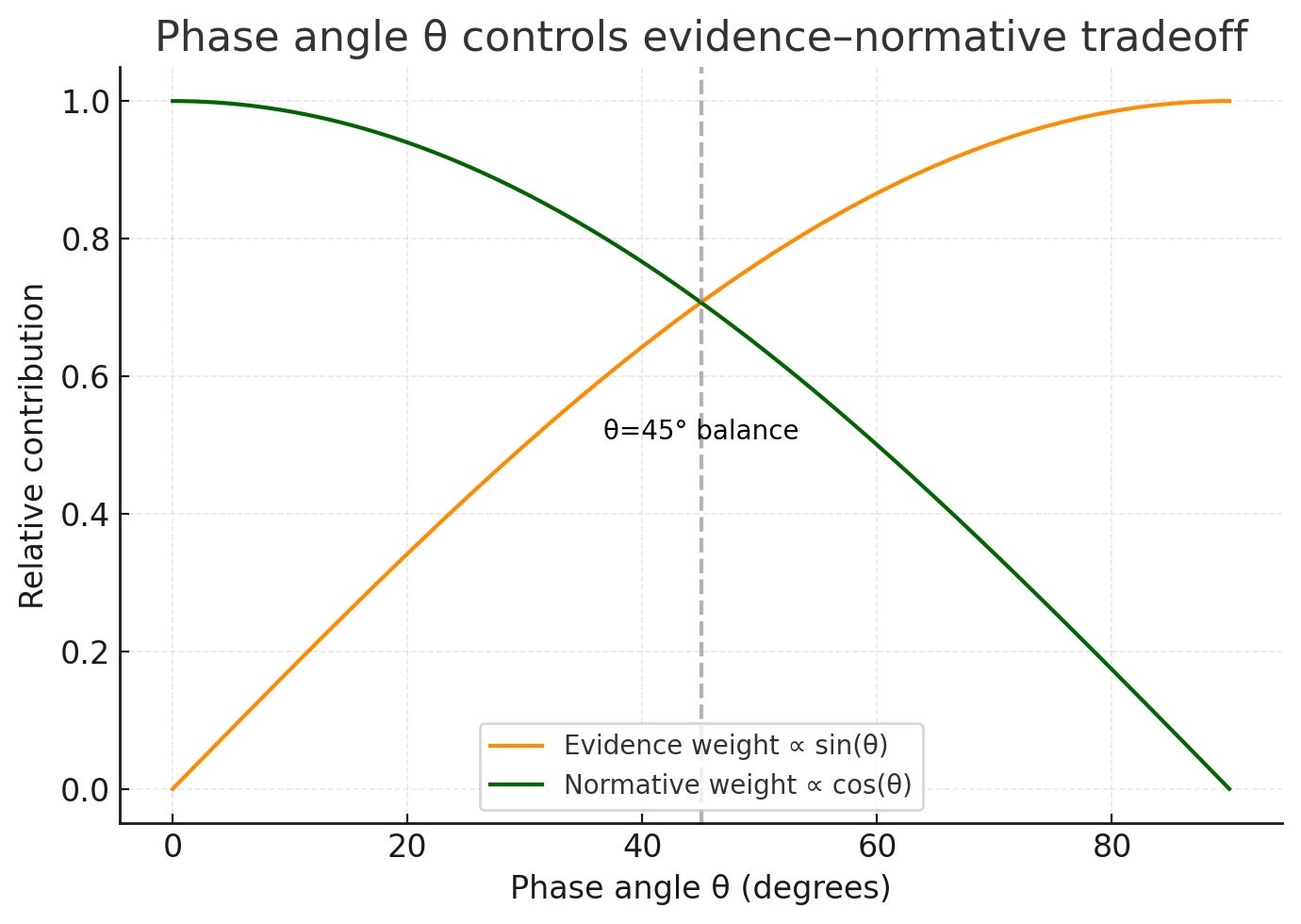A curious Rotation towards Counterfactuals?
A speculative poster by Andre Kramer with ChatGPT-5, andrekramermsc.substack.com
Column 1 – The R (Rotation) Rule
ψ′(a)=ψ(a)+η *sqrt(p(a)(1−p(a))) *[ αsinθA(a)−iβcosθN(a) ], p′(a)=∣ψ′(a)∣^2 / ∑b ∣ψ′(b)∣^2.
p(a)=∣ψ(a)∣^2: probability / belief
A(a): evidence head (bottom-up)
N(a): normative head (top-down)
sqrt(p(1−p)): uncertainty gate
Phase angle θ: controls evidence–value tradeoff
A speculative extension of active inference: dual drives, orthogonal update channels, uncertainty-gated learning.
Column 2 – Three Readings
Pavlovian Conditioning
Write → Store → Read → Forget via CS-US pairing.Predictive Processing
Evidence vs. value separation; precision-weighted learning.Levin-Style Networks
Molecular loops with slow traces as emergent memory.
Simulation code and results:
👉 r-3-learners.py
👉 R-rule results
An applications in Transformer Models (Dual Attention Heads):
👉 see separate ML poster.
Column 3 – Broader Resonances
Math echo: amplitude rotations like in QM (but not quantum).
Counterfactuals & negation: the “imaginary” channel encodes alternatives.
Recursion: same rule bridges chemistry/biology, inference, learning (applicable between levels)
Balance: evidence (exploitation) vs. values (exploration) (Actor & Critic)
Like a second-order Bayesian update: uncertainty-gated, dual-headed, phase rotated.
Summary: The R-rule is a Bayesian update extended to include counterfactuals and negations (“if not x, then y”) alongside evidence. Mathematically, it can be written as a double update or expressed as a complex function. It remains compatible with standard log/exp (softmax) updates used in Bayesian schemes such as active inference and deep learning.
Key Takeaway
A system can maintain robustness and adaptability by recursively updating its internal state through the modulation of evidence and norms, gated by uncertainty:
ψ′=ψ + uncertainty(ψ) (sinθ⋅evidence(ψ) − icosθ⋅norms(ψ)),
with probabilities recovered as
p′=∣ψ′∣^2 / ∑b∣ψb′∣^2.
Here, evidence and norms themselves update across levels, enabling a recursive process where uncertainty acts as a structural driver of adaptation.
Open Question: Where could this rule be most useful?
Looking for collaborators to explore concrete applications.






